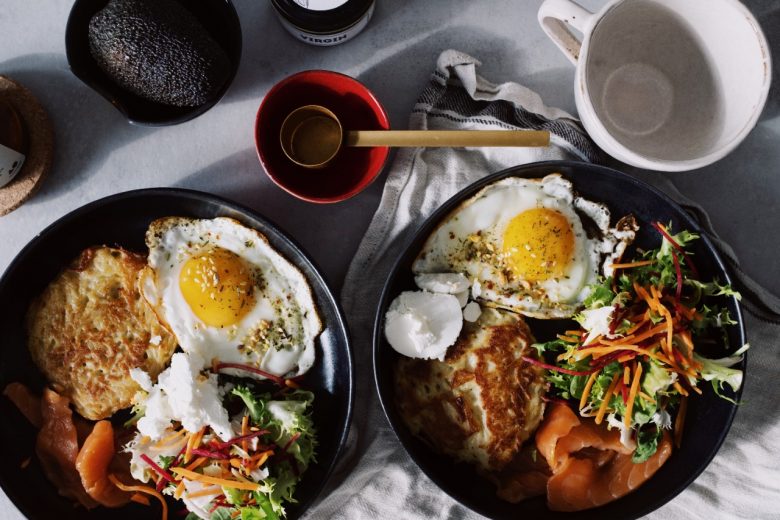Mindful eating requires choosing the right quantities of foods for any given meal. To understand that there are two terms to be aware of: serving size and portion size.
A serving size is a standardized serving of food described on nutrition labels of packaged food products. Companies use serving sizes to list down nutrition information about their products and allow comparisons with other foods for the customer’s benefit.
Portion sizes, on the other hand, are under the control of the individual. It refers to the quantity of food that a person actually consumes over any meal and can be more or less than a serving size.
Regulating portion sizes along with calorie control provides structure to mealtime and decreases the urge to overeat.
WAYS TO PORTION
It is not always possible to keep measuring utensils handy to regulate portion size. We may be on-the-go or short of time. So, here are two useful ways to help with portioning:
Hand Estimation –
- Our hand size corresponds to our body weight and anatomy. And for this reason, they can give us the best estimate for our food portions.
- Palm size, fist size, thumb size and hand size are some fundamental ways by which food portions can be controlled.
Plate Portioning –
- Plate and spoon sizes have been known to subconsciously influence how much we eat. Hence, portion control using plates is also an effective tool.
- Using larger plates are to be avoided since even a sufficient quantity of food on large plates can seem small. It helps to use smaller plates and then portion food by halves and quarters or through hand estimations.
With this rough portion calculation using hand estimates and plate portioning, it gets easier to further customize the quantity of food required by adding more or less to this portion size while making sure calorie intake is still regulated.
PORTIONING – A HAND ESTIMATION
A well-balanced meal has an optimal protein, carbohydrate and fat ratio along with sufficient vegetables to bring in the necessary fibres, vitamins and minerals. Here’s a basic hand-size guide to portion any meal:
It’s important to note that these guides are meant only to serve as a rough estimate and ratios can vary for different people with different calorie needs. Always consult with your fitness coach and dietician to decide on portions based on calories required.
TO SUMMARIZE
Here are some important points to remember about food portioning:
- Use the hands as a portion guide: Fist the proteins, palm the carbs, thumb the fats and pile on the veggies to fill the plate. Then, customize as necessary to fulfill your daily calorie intake.
- Use smaller plates to decrease the tendency to overeat.
- Do not eat any food directly from the container. Train the mind to use a plate or bowl to limit portions while still enjoying your favorite snacks.
- Read nutrition labels on packaged foods to be aware of serving sizes and their nutrition offerings.
Be mindful and eat healthy.





